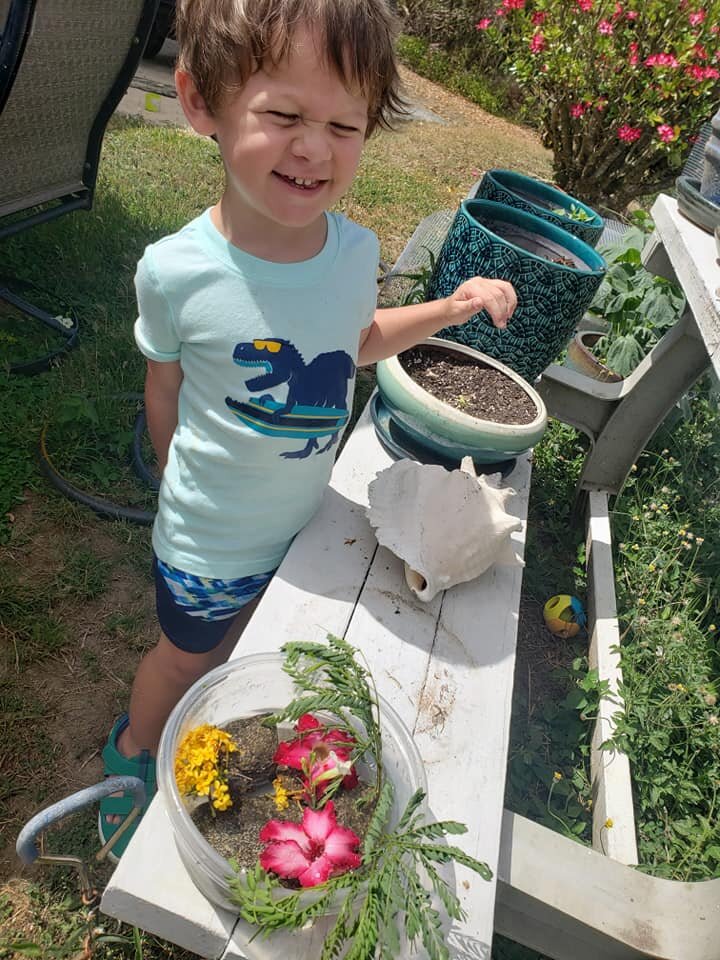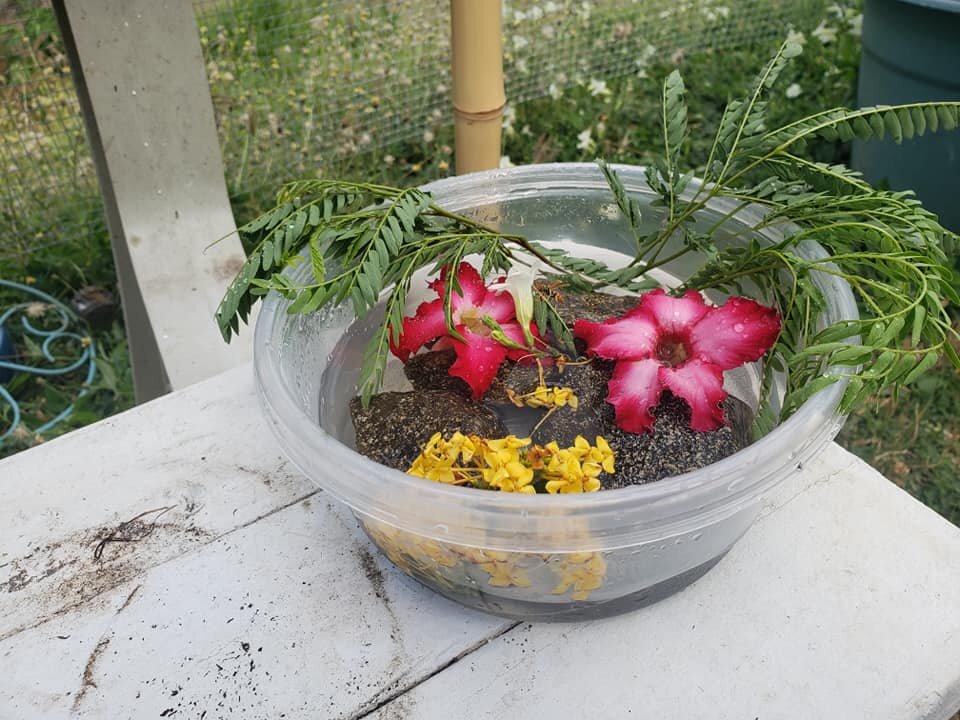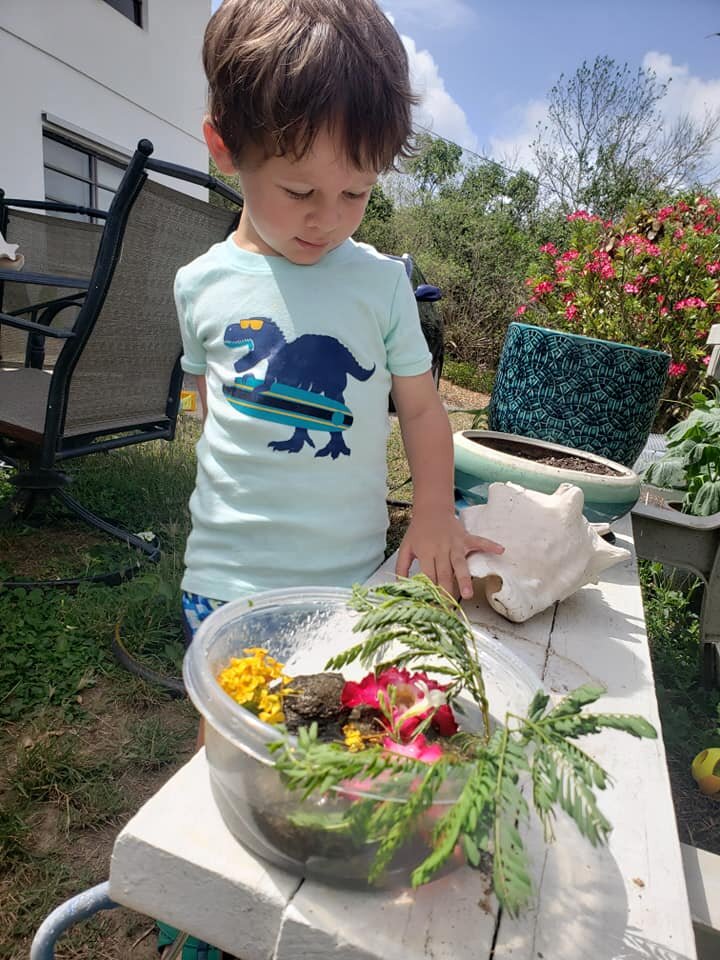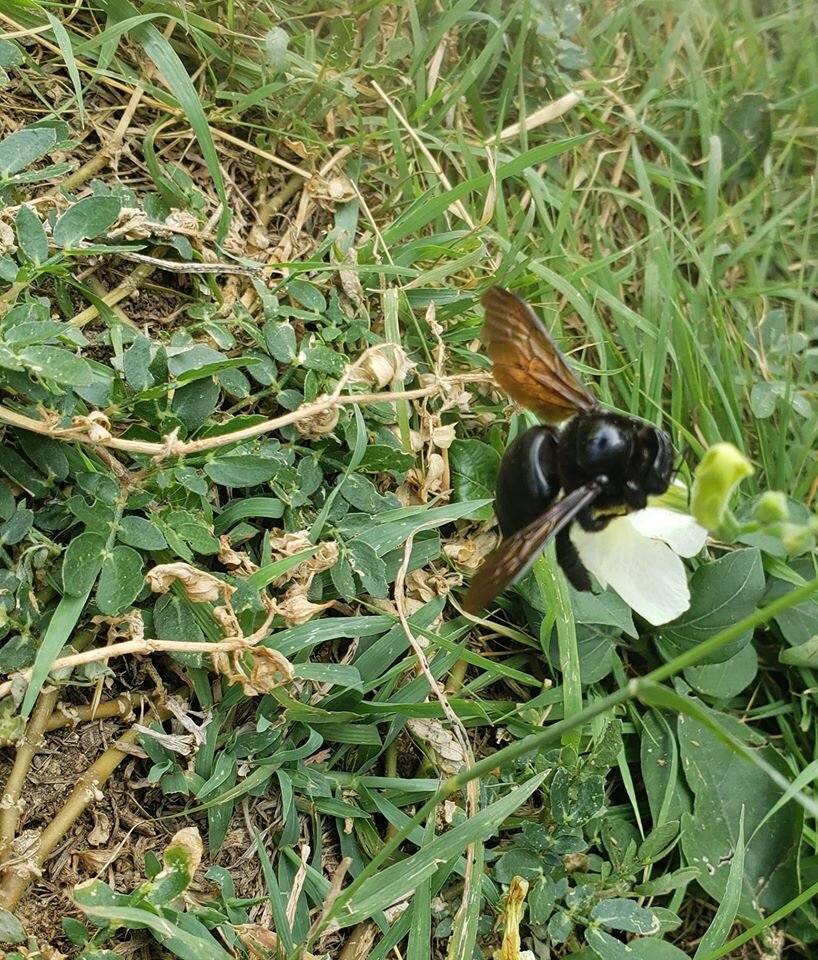World Bee Day 2020
Orion and his little bee friend sharing a moment on World Bee Day 2020
Happy World Bee Day 2020
Are your kiddos as bee crazed as my little one? Or do you have an older kid that loves to use the dreaded five letter word “BORED”? Well if so, check out this easy to make Bee Watering Station! Kids (and adults) of all ages will have a blast as you can create a game of scavenger hunt out of finding the needed materials from your yard. Turn this activity into a learning opportunity and double win! I have some fun bee facts at the bottom of this post that you can share with your kids.
For World Bee Day 2020, my son and I went around our house and gathered materials for our bee watering station. I’ve seen a similar activity floating around the Internet land years back, so I can’t take full credit for this activity, but I can say ours turned out really nice and my son was so proud of himself. We even had a little bee come to visit right as we were finished making it! Talk about timing of the universe!
Here’s what you need:
Directions:
Step 1: Grab a container. Plastic preferably, but if you have older children that don’t randomly catapult things you can get away with using glass. I have a toddler, so plastic it is!
Orion was contemplating throwing his container in the pool, but thankfully handed it to me first… toddlers
Step 2: Fill the bottom with rocks or place a large rock or two inside the container. This prevents your container from flying and provides a resting spot for the bees so they don’t drown.
This is quite too many rocks, as you only need one or two. Orion was a little excited for this step.
Step 3: Add your flowers, sticks or leaves. Don’t overcrowd your station but make it pretty and inviting for the bees to come. These decorations also provide the bees a spot to rest and sip their water.
Step 4: Now add your water, as it is a bee watering station after all! Place just enough water to cover the rocks so that the bees can land and drink while still having a place to rest. You might have to refill the water daily, as the water evaporates. Just keep an eye on it.
This happened to be Orion’s favorite part.
Step 5: Place your bee watering station in an area around your home that you notice bees like to visit. (Flower gardens, near your pool, etc.)
Our completed Bee Watering Station ready for it’s first visitor.
Step 6: Take a picture of your station and e-mail it to mudpuddlesandmotherhood@gmail.com or tag me @mudpuddlesandmotherhood on Instagram or Facebook. I would love to feature you on my social media.
Orion’s friend Tristan enjoyed making a Bee Watering Station at his house inspired by this post!
Incorporate these facts into your activity for an
educational bee lesson
1. One in three bites of food are made possible because of bees. They amount for 15 billion dollars of food crops in just the US alone! We can thank the bees for 100% of the almond crops and 90% of the apple crops in the United States!
2. In 2017 bees were placed on the endangered list here in the United States. Over 60% of the honey bee population has perished since 1947
3. There are over 20,000 different types of bees in the world, but the most well-known is the Western honeybee.
4. All worker bees are female
5. It takes one bee its whole lifetime to make 1 tsp of honey and over 20,000 bees to make one jar of honey.
6. The flavor of honey depends on the flower source they collect their nectar from. If you live near an orange field, the honey will have a slight orange flavor.
7. A worker bee lives only five to six weeks, but the queen bee can live for up to five years!
8. The Cuckoo bee doesn’t have a nest, so she will sneak into other bee’s nests and lay her eggs.
9. Not all bees have hives. Half of the world’s bees make their nests underground.
10. Bees move their wings 200 times per second which gives them their unique buzzing sound.
If you want to find out more about bees you can check out Orion’s favorite book on Bees below.
Click here to buy!
You can join the fight to save the bees by checking out The Honey Bee Conservancy. This is a great organization that is working hard to help our pollinators.
If you enjoyed this post, please comment below and share with your friends and family. Let’s all work together to help save the bees! And remember, children learn by imitation and observation, so make sure you teach them young to be compassionate and loving to Mother Earth.
Sources:
1. The Honey Bee Conservancy. “Honey Bees: Heroes of our Planet.” Accessed May 26, 2020. https://thehoneybeeconservancy.org/why-bees/honey-bees-heroes-of-our-planet/
2. The Honey Bee Conservancy. “Why Bees.” Accessed May 26, 2020. https://thehoneybeeconservancy.org/why-bees/
3. Science Learning Hub. “Bees: Fun Facts.” June 30, 2007. Accessed May 26, 2020. https://www.sciencelearn.org.nz/resources/2002-bees-fun-facts
4. Bone, Emily. “Lift-the-Flap First Questions and Answers: Why Do We Need Bees”. Usborne Books, Publication Date.
5. National Geographic Kids. “10 Facts about Honey Bees.” Accessed May 26, 2020. https://www.natgeokids.com/uk/discover/animals/insects/honey-bees/














